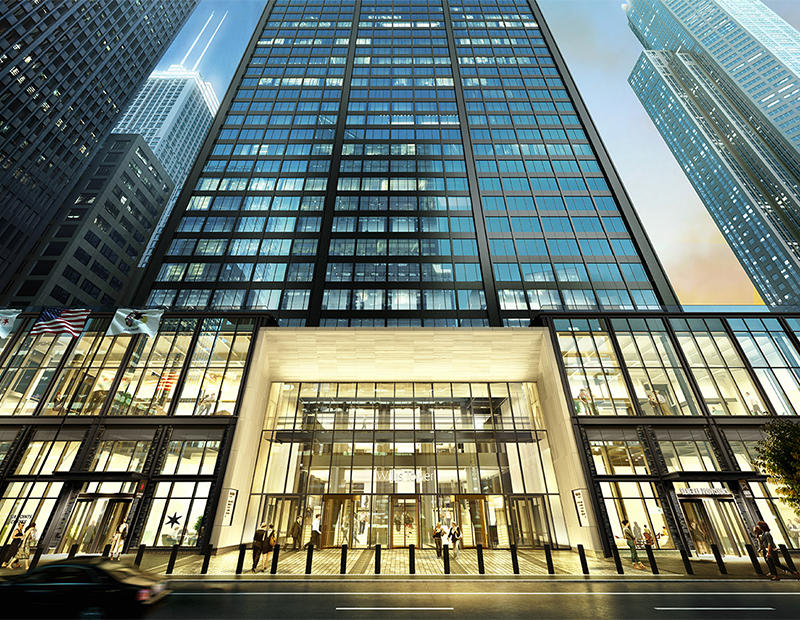Willis Tower’s Sustainable Practices Ensure LEED Gold
The high-rise's $500 million renovation includes improvements designed to reduce its environmental footprint. Completed in 1973, the former Sears Tower is slated to add 300,000 square feet of new retail.
By Anca Gagiuc
 EQ Office’s Willis Tower in Chicago has received the LEED Gold certification from the U.S. Green Building Council with a score of 60 points. The iconic property at 233 S. Wacker Drive is undergoing the largest restorative transformation in its 43-year history, estimated to cost more than $500 million.
EQ Office’s Willis Tower in Chicago has received the LEED Gold certification from the U.S. Green Building Council with a score of 60 points. The iconic property at 233 S. Wacker Drive is undergoing the largest restorative transformation in its 43-year history, estimated to cost more than $500 million.
The revamp of the 110-story former Sears Tower will add 300,000 square feet of new retail, dining and entertainment space, including Catalog, a five-story neighborhood experience, as well as 125,000 square feet of tenant exclusive amenities and a 30,000-square-foot outdoor deck and garden.
“Willis Tower is a major destination in the heart of Chicago, and for more than 15,000 people, it’s also their workplace,” David Moore, senior vice president & portfolio director of EQ Office, said in a prepared statement. “As we redevelop this iconic tower, we’re making a conscious effort to find ways to improve energy efficiency and reduce our environmental footprint.”
Notable sustainable upgrades
The current renovation includes improvements designed to reduce the building’s environmental footprint, including:
- Installation of high-efficiency lighting systems with improved controls to reduce energy consumption, including the building’s newly renovated LED antenna lighting system.
- Improvements to the building’s HVAC exhaust and return fan dampers which, along with the new building automation management system, will improve temperature control and reduce energy usage.
- Introduction of all-new air media, fan gearboxes and fan blades, along with the installation of new variable-frequency drives to all four of the project’s cooling towers. The upgrade will supply the chillers with lower temperature condensing water, resulting savings on the electric energy consumed by the cooling towers of about 20 percent.
- Installation of low-flow, high-efficiency units on more than 450 sinks, 650 toilets and urinals, which is estimated to save roughly 11 million gallons of water annually, reducing the building’s water usage by 30 percent.
- Replacement of all the building’s automatic transfer switches, enhancing the integrity of its electrical infrastructure.
Wisconsin-based Rivion, an energy consulting firm, took part in the planning and implementation of these energy-saving initiatives. “Willis Tower has long been one of the most iconic skyscrapers of the Chicago skyline, so it is fitting for it to be a sustainability leader as well by achieving LEED Gold,” added Mahesh Ramanujam, president & CEO of USGBC.
Image courtesy of Willis Tower







You must be logged in to post a comment.